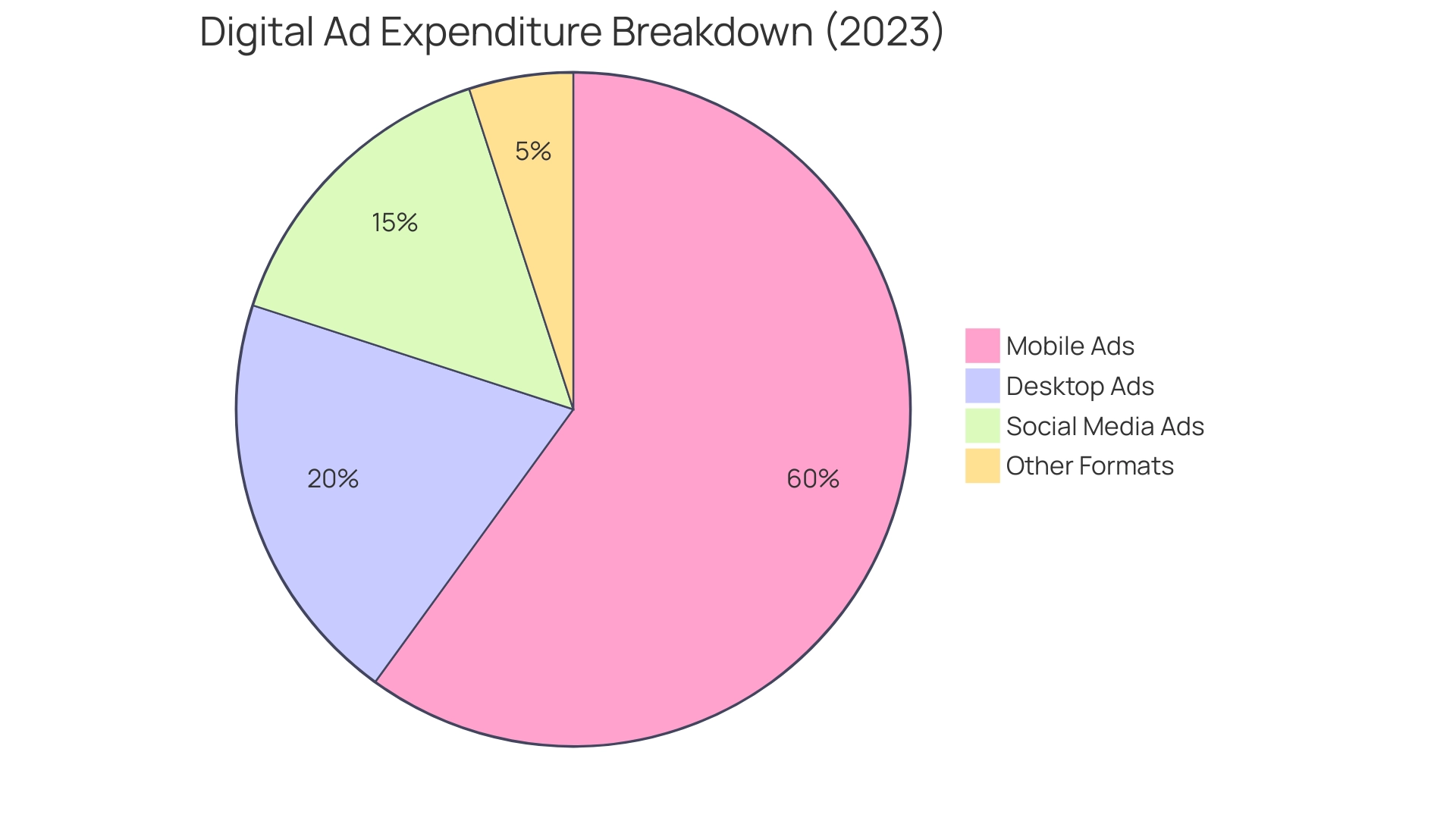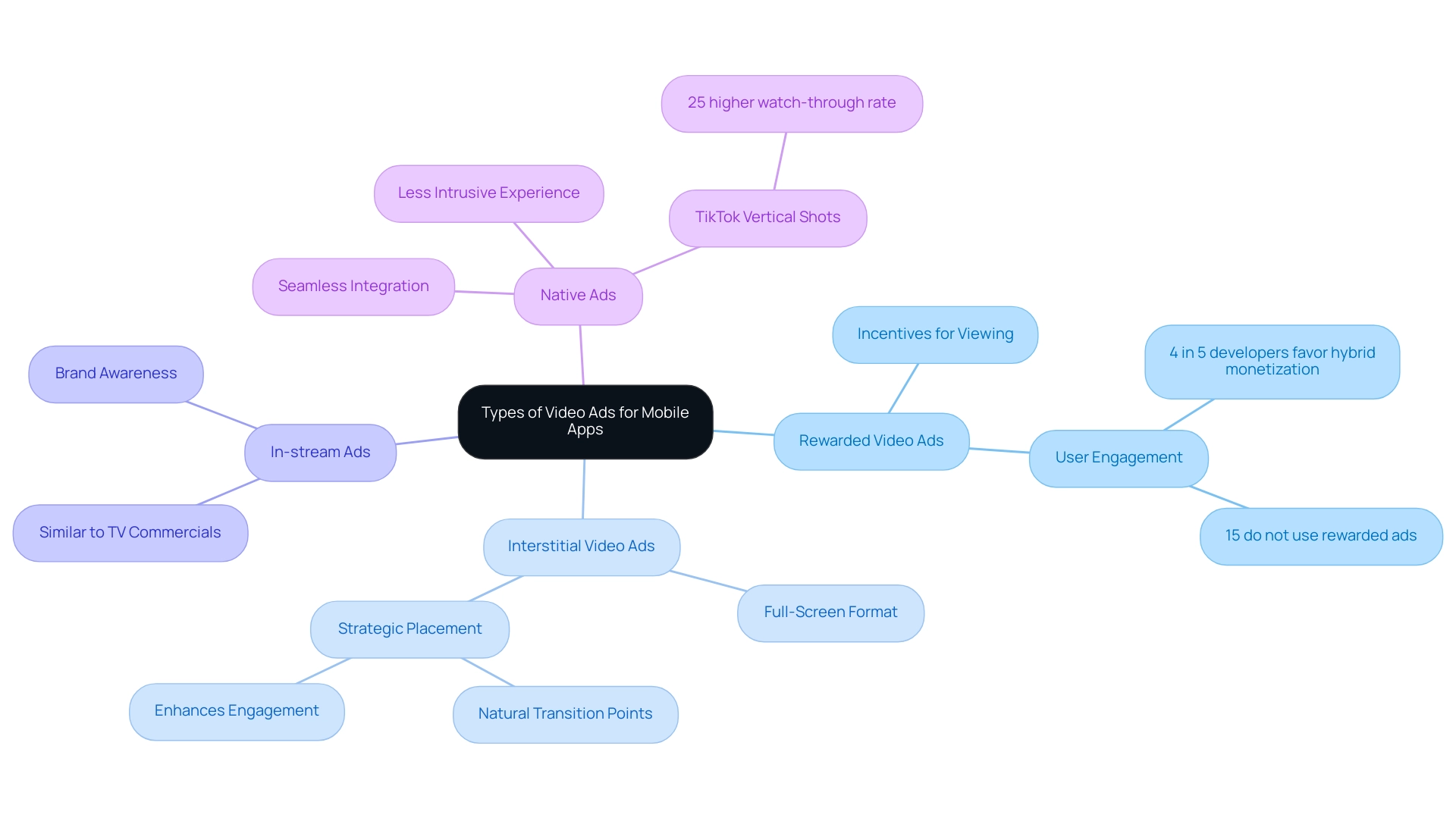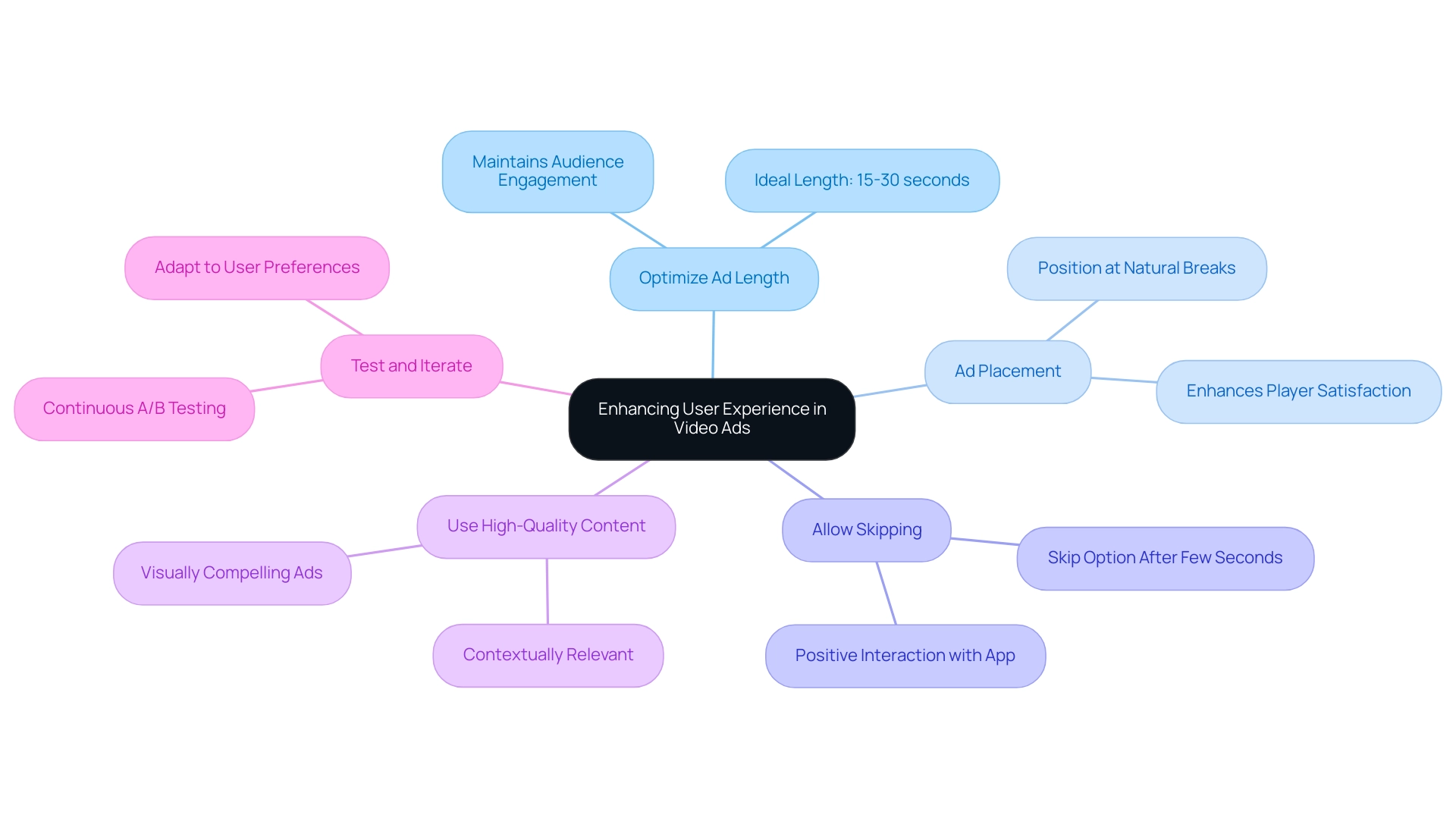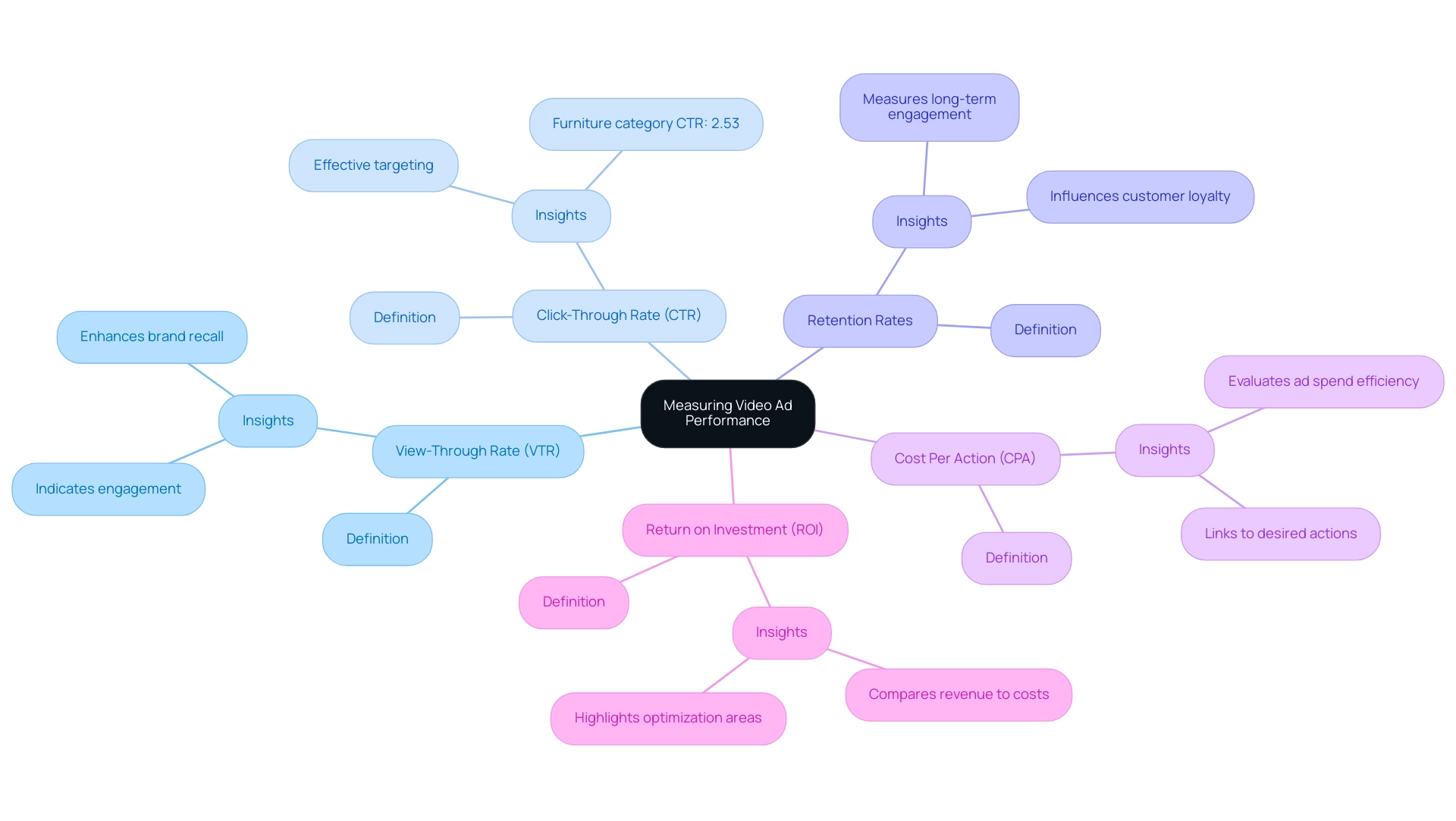Introduction
In the dynamic realm of digital marketing, mobile video advertising has emerged as a cornerstone for app monetization, capturing the attention of both developers and consumers alike. With the proliferation of smartphones and an insatiable appetite for video content, the significance of this advertising format cannot be overstated. As 2023 unfolds, mobile video ads account for a staggering 60% of all digital video ad spending, illustrating their pivotal role in driving user engagement and revenue growth.
This article delves into the intricacies of mobile video advertising, exploring various ad formats, best practices for enhancing user experience, and key metrics for measuring success. By understanding these elements, app developers can effectively harness the power of video to optimize their marketing strategies and achieve sustainable profitability in an increasingly competitive landscape.
Understanding Mobile Video Advertising: An Overview
Mobile advertising, including video ads in mobile apps, has solidified its position as an essential strategy for app monetization, particularly in light of the rapid adoption of smartphones and the escalating consumption of content on mobile platforms. In 2023, mobile ads accounted for more than 60% of all digital ad expenditure, highlighting their essential role for app developers and marketers. The effectiveness of these ads is clear; consumers who engage with user-generated content are 184% more likely to make a purchase and tend to spend 45% more than those who do not.
Furthermore, insights from the digital landscape reveal that LinkedIn users are 20 times more likely to share visual content compared to other formats, leading to a remarkable 157% increase in organic traffic from search engine results pages (SERPs). Furthermore, including a visual on a landing page can boost conversions by 80% or more. This trend emphasizes the significance of grasping different advertisement formats and placements, along with producing content designed for silent viewing, which is 70% more likely to be watched to completion.
Understanding the dynamics of video ads in mobile apps is paramount for any app developer aiming to optimize marketing efforts and enhance revenue generation. As Udonis, an experienced mobile marketing agency, aptly states,
If you need help, make sure to reach out – Udonis is an experienced mobile marketing agency that can help you reach your goals and stay ahead in this competitive market.

Exploring Different Types of Video Ads for Mobile Apps
App developers have a range of advertisement formats at their disposal, each designed to fulfill specific marketing objectives and improve experience:
- Rewarded Video Advertisements: These advertisements motivate individuals by providing incentives, such as in-app currency or exclusive items, for viewing a clip. This approach has demonstrated remarkable success in boosting user engagement and retention rates.
A recent study indicates that 4 in 5 developers think that rewarded advertisements are most effective when incorporated into a hybrid monetization model, emphasizing their worth in a competitive environment. Notably, only 15% of mobile game developers whose games contain ads do not utilize rewarded video ads, highlighting their prevalence and importance in the industry.
- Interstitial Video Ads: These full-screen advertisements are strategically positioned at natural transition points within the app—such as between game levels—capturing audience attention effectively.
Although they can be seen as disruptive, their proper timing can significantly enhance audience engagement. Statistics suggest that interstitial advertisements can result in enhanced engagement when implemented carefully.
- In-stream Ads: Playing before, during, or after content, these advertisements resemble traditional TV commercials and are particularly effective for brand awareness campaigns.
Their ability to deliver targeted messages to viewers makes them an excellent choice for advertisers looking to expand their reach.
- Native Ads: Seamlessly incorporated into the app’s content, native ads offer a less intrusive experience by engaging individuals without disrupting their interactions. This format is increasingly preferred due to its subtlety and effectiveness, allowing brands to connect with individuals in a more organic manner.
Additionally, TikTok's vertical shots (9:16) have been shown to have a 25% higher 6-second watch-through rate compared to horizontal shots, emphasizing the significance of format in capturing audience attention.
By understanding and leveraging these diverse advertisement types, particularly video ads in mobile apps, app developers can tailor their marketing strategies to align with individual preferences, ultimately enhancing monetization efforts and driving profitability. Moreover, collaborating with leading rewarded advertising platforms can boost app marketing initiatives by granting access to vast networks, sophisticated analytics, and optimization tools, resulting in enhanced engagement and satisfaction.

Best Practices for Enhancing User Experience in Video Ads
To enhance customer experience in mobile advertisements, applying the following best practices is crucial:
- Optimize Ad Length: Aim for brevity; video ads should ideally range from 15 to 30 seconds. This length helps maintain audience engagement in video ads in mobile apps without leading to frustration, as shorter ads are more likely to be viewed in their entirety.
- Ad Placement: Strategically position ads at natural breaks within the app, such as during level transitions or after gameplay, to reduce disruption and enhance player satisfaction.
- Allow Skipping: Enabling individuals to skip ads after a few seconds can significantly enhance their experience, especially for non-rewarded content, fostering a more positive interaction with the app.
- Use High-Quality Content: Invest in visually compelling and contextually relevant advertisements to capture and sustain the interest of your audience, thereby boosting engagement.
- Test and Iterate: Implement continuous A/B testing for various ad formats, placements, and lengths to identify which combinations yield the best results. This iterative method guarantees that your advertising strategy adapts to user preferences.
The marketing landscape is rapidly expanding, with 44% of Instagram users interacting with shopping through the app weekly, emphasizing the significance of ads in driving e-commerce. As highlighted by Victor Blasco,
Fully 69% of individuals surveyed in the US stated that their smartphones were the 'most used devices for digital content.'
Furthermore, live streaming content has been shown to attract three times more engagement than its pre-recorded counterparts.
This suggests that integrating live broadcasts into your marketing approach can greatly improve audience engagement and satisfaction. By following these strategies, you can create a monetization framework that respects experience while driving revenue growth.

Measuring Success: Key Metrics for Video Ad Performance
To effectively evaluate the success of video advertisements within mobile applications, it is essential to concentrate on several key performance metrics that reflect the tailored e-commerce solutions we have developed over 20 years of global experience:
- View-Through Rate (VTR): This metric indicates the percentage of individuals who watch the complete advertisement, providing valuable insights into engagement. A strong VTR indicates that your content resonates with the audience, enhancing brand recall and contributing to community value.
- Click-Through Rate (CTR): The CTR measures the proportion of viewers who engage with the ad by clicking on it. In the furniture category, a CTR of 2.53% signifies effective targeting and compelling content that encourages interaction, demonstrating how well your solutions map to internal goals.
- Retention Rates: Investigating how video ads affect audience retention is vital. By evaluating whether individuals continue to engage with the app after exposure, you can measure the long-term effectiveness of your advertising efforts and their influence on boosting customer loyalty.
- Cost Per Action (CPA): Understanding the costs linked to acquiring each desired action—such as app downloads or in-app purchases—is crucial for evaluating the efficiency of your ad spend. This metric is essential for ensuring that your strategies are generating incremental value for your organization.
- Return on Investment (ROI): Ultimately, the profitability of your video ad campaigns should be measured by comparing the revenue generated against the costs incurred. This analysis not only reveals the financial viability of your strategies but also highlights areas for optimization, ensuring your community thrives.
Our customized e-commerce solutions have a proven track record of significantly enhancing Average Order Value (AOV) and Lifetime Value (LTV) by effectively engaging customers and driving conversions through these metrics. With mobile app usage averaging an impressive 3 hours and 28 minutes per user daily, compared to just 51 minutes for web browsing, leveraging these metrics is paramount for developers aiming to refine their advertising strategies. Furthermore, according to Dave Chaffey, "Unfortunately, there isn't a breakdown by social network in the Skai data, but the majority of the spend is on video ads in mobile apps, particularly with Meta platforms Facebook and Instagram."
This highlights the importance of focusing ad spend on platforms where engagement is highest. Additionally, consumers who end up on an e-commerce site through a user-generated video are 184% more likely to purchase, underscoring the effectiveness of video ads in mobile apps for driving conversions. As the digital landscape evolves, consistently reviewing these metrics will ensure sustained success and improved monetization outcomes for mobile applications.

Conclusion
Mobile video advertising stands at the forefront of app monetization, proving to be an indispensable strategy for developers and marketers alike. By understanding the various ad formats—such as rewarded, interstitial, in-stream, and native video ads—app developers can tailor their approaches to align with user preferences, ultimately enhancing engagement and profitability. The staggering statistics surrounding user interactions with video content reinforce the necessity of integrating compelling video advertising into marketing strategies, making it clear that the right format and placement can significantly elevate user experiences.
To optimize the effectiveness of mobile video ads, adhering to best practices is crucial. This includes:
- Keeping ad lengths concise
- Strategically placing ads
- Allowing users to skip when appropriate
- Utilizing high-quality content
Continuous testing and adaptation will further refine these strategies, ensuring they resonate with the evolving preferences of users. As engagement with video content continues to soar, particularly through platforms like Instagram and TikTok, embracing these best practices can lead to substantial improvements in user satisfaction and monetization outcomes.
Lastly, measuring the success of video ads through key performance metrics—such as view-through rates, click-through rates, retention rates, cost per action, and return on investment—enables developers to assess the impact of their advertising efforts accurately. By focusing on these metrics, app developers can not only optimize their strategies for greater efficiency but also ensure sustainable profitability in a competitive landscape. As mobile video advertising continues to dominate the digital marketing sphere, leveraging its potential is essential for app developers seeking to thrive in an ever-evolving environment.





